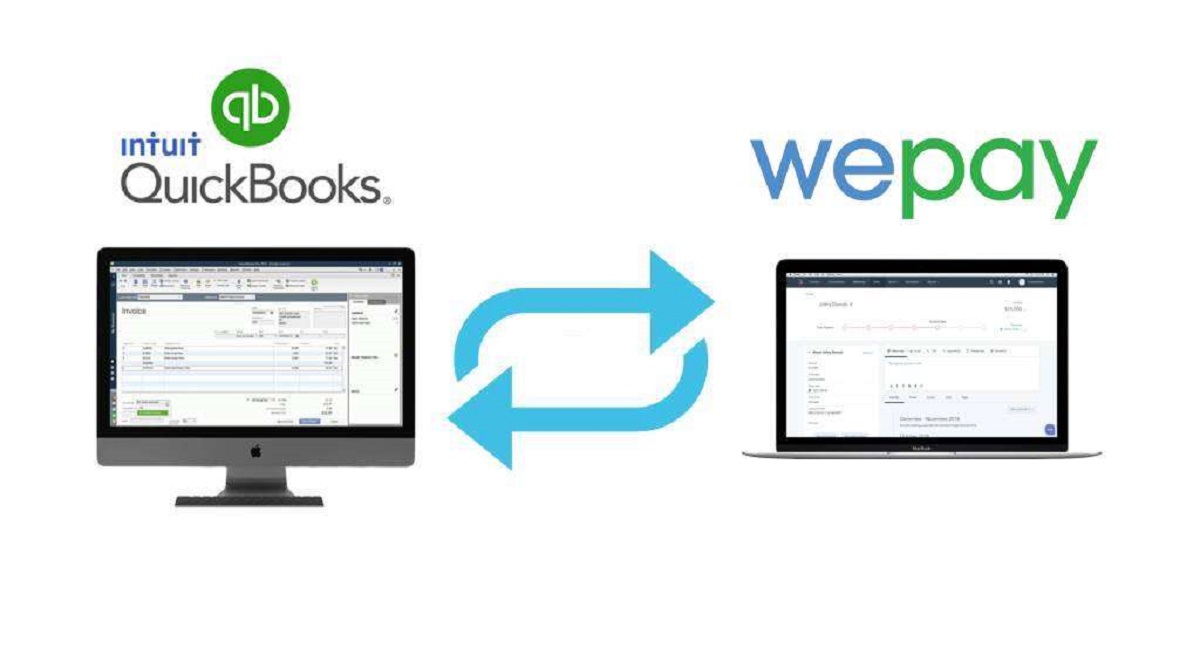Introduction
Welcome to the world of QuickBooks, a powerful accounting software designed to simplify business finances. One of the key aspects of managing your financial records in QuickBooks is categorizing your transactions. Categorizing transactions allows you to track income, expenses, assets, and liabilities accurately, providing you with valuable insights into your business’s financial health.
In this article, we will explore the importance of categorizing transactions in QuickBooks and guide you through the process of choosing the right categories for your transactions. We will also discuss creating custom categories, using subcategories for better organization, and utilizing tags to further classify your transactions.
Proper categorization not only helps you stay organized but also ensures accurate financial reporting and streamlines the tax filing process. With the ability to import categories from other sources and manage them efficiently, QuickBooks offers a comprehensive solution for all your transaction categorization needs.
Whether you are a small business owner or a seasoned accountant, understanding the intricacies of categorizing transactions in QuickBooks is essential for maintaining accurate financial records and making informed financial decisions.
So, let’s dive in and explore the world of transaction categorization in QuickBooks!
Understanding Categories in QuickBooks
Categories in QuickBooks are pre-set classifications that allow you to classify your transactions into different types, such as income, expenses, assets, and liabilities. These categories serve as a framework for organizing and tracking your financial data effectively.
When setting up your QuickBooks account, you will find a list of default categories that cover common types of transactions. These categories include but are not limited to: Advertising & Marketing, Rent, Utilities, Office Supplies, Sales, and Taxes. Each category has a specific purpose and corresponds to a different aspect of your business finances.
By assigning the appropriate categories to your transactions, you can gain valuable insights into your business’s financial performance. Categorized transactions make it easier to generate accurate financial reports, such as Profit and Loss statements and Balance Sheets. These reports help you analyze your income and expenses, track your cash flow, and make informed decisions to grow your business.
In addition to the default categories, QuickBooks allows you to create custom categories to suit your unique business needs. Custom categories enable you to track specific expenses or revenue streams that may not be covered by the default options. This level of flexibility allows you to tailor your financial management to your specific industry or business requirements.
Understanding the purpose and function of each category is crucial when categorizing transactions in QuickBooks. Take the time to familiarize yourself with the available categories and their meanings, ensuring that you assign transactions to the most appropriate category. This attention to detail will help maintain accuracy in your financial records, making it easier to monitor your business’s financial health.
Overall, a solid understanding of categories in QuickBooks is fundamental for effective transaction management. By correctly assigning categories to your transactions, you can streamline your bookkeeping process, improve financial reporting accuracy, and gain valuable insights into your business’s finances.
Choosing the Right Category for Transactions
One of the key steps in properly categorizing transactions in QuickBooks is selecting the right category for each transaction. Choosing the correct category ensures accurate financial reporting and provides a clear overview of your business’s income and expenses. Here are some guidelines to help you choose the right category:
1. Understand the purpose of each category: Take the time to familiarize yourself with the default categories in QuickBooks and their meanings. Review the category descriptions provided and identify which category aligns best with the transaction you are categorizing. This understanding will help you maintain consistency in your categorization process.
2. Consider the nature of the transaction: Analyze the transaction details and determine its primary purpose. Is it an expense related to office supplies, a payment for rent, or income from a specific revenue stream? Assign the category that accurately describes the transaction type to ensure it gets properly recorded and categorized.
3. Be specific when necessary: While the default categories cover a wide range of transaction types, there may be instances where you require more specific categories. In such cases, consider creating custom categories that cater to your unique transaction needs. This level of specificity allows for better tracking and reporting of expenses or revenue streams that are unique to your business.
4. Seek consistency in categorization: Consistent categorization is crucial for accurate financial reporting. Establish a set of guidelines or rules for categorizing different types of transactions in your business. For example, you may decide that all transactions related to marketing and advertising should be categorized under the “Advertising & Marketing” category. This consistency not only ensures accuracy but also simplifies the tracking and analysis of specific expense or income categories.
5. Utilize account filters: QuickBooks allows you to filter transactions based on accounts or categories. Take advantage of this feature to review and verify the transactions within each category regularly. This step helps to identify any miscategorized transactions and correct them promptly, maintaining data accuracy.
In summary, choosing the right category for each transaction is a crucial step in effective transaction management in QuickBooks. By understanding the purpose of each category, considering the nature of the transaction, being specific when necessary, seeking consistency in categorization, and utilizing account filters, you can accurately categorize your transactions and generate meaningful financial reports for your business.
Creating Custom Categories
While QuickBooks provides a comprehensive set of default categories, there may be instances where you need to create custom categories to suit your unique business needs. Custom categories allow you to track specific types of expenses or revenue that are not covered by the default options. Here’s how you can create custom categories in QuickBooks:
1. Access the Chart of Accounts: The Chart of Accounts is the central hub for managing all your categories in QuickBooks. To access it, go to the “Lists” menu and select “Chart of Accounts.”
2. Add a new category: Click on the “Account” dropdown menu and choose “New” to add a new category. Select the account type that best suits your custom category, such as income or expense.
3. Name your category: Give your custom category a descriptive name that accurately represents the type of transaction it will be associated with. For example, if you want to track expenses related to website development, you can name the category “Website Development Expenses.”
4. Assign a detail type: QuickBooks provides a range of detail types that further classify your custom category. Choose the detail type that closely aligns with the purpose of your category, such as advertising expenses or office supply expenses.
5. Save your category: Once you have filled in all the necessary information, click “Save” to create your custom category. It will now be available for selection when categorizing transactions in QuickBooks.
Custom categories offer you the flexibility to track specific expenses or revenue streams that are unique to your business. By accurately categorizing these transactions, you can gain a more comprehensive understanding of your financial situation and make informed decisions.
It is important to note that when creating custom categories, it is advisable to keep the number of categories manageable. Having too many categories can make the categorization process complex and time-consuming. Therefore, consider consolidating similar types of transactions under broader categories to maintain simplicity and efficiency.
Additionally, periodically review your custom categories to ensure they are still relevant and necessary. Your business needs may evolve over time, and certain categories may become obsolete or no longer required. Regular category maintenance helps keep your QuickBooks account organized and up to date.
By leveraging the ability to create custom categories in QuickBooks, you can tailor your financial tracking to your business’s unique needs, ensuring accurate reporting and streamlined categorization.
Using Subcategories for Better Organization
In addition to the default categories and custom categories, QuickBooks offers the option to create subcategories to further organize and classify your transactions. Subcategories provide a hierarchical structure that allows for better organization and more detailed tracking of your financial data. Here’s how you can use subcategories in QuickBooks:
1. Understand the need for subcategories: Subcategories offer a way to create more specific classifications within existing categories. For example, if you have an expense category for “Travel,” you can create subcategories for different types of travel expenses such as “Airfare,” “Hotel Accommodations,” and “Car Rental.”
2. Access the Chart of Accounts: Go to the “Lists” menu in QuickBooks and select “Chart of Accounts” to access your existing categories.
3. Create a parent category: To create a subcategory, start by adding a new category as you would for a custom category. However, instead of selecting an account type, choose an existing category as the parent category for the subcategory you want to create.
4. Name your subcategory: Provide a descriptive name for your subcategory that reflects the specific type of transaction it represents. For example, if you are creating a subcategory for “Airfare” under the “Travel” category, you could name it “Airfare Expenses.”
5. Save your subcategory: Once you have filled in the necessary information, click “Save” to create the subcategory under the designated parent category.
By utilizing subcategories, you can create a more detailed breakdown of your expenses or revenue streams, making it easier to track and analyze specific aspects of your business finances. Subcategories offer a granular view of your financial data without cluttering your Chart of Accounts.
When categorizing transactions, ensure that you select the appropriate subcategory under the relevant parent category. This level of specificity ensures accurate reporting and allows for a more comprehensive understanding of your financial situation.
It is important to keep in mind that subcategories should be used judiciously, and the hierarchy should remain manageable. Too many subcategories can lead to confusion and complexity. Therefore, consider creating subcategories only for significant and distinct transaction types that require further classification.
Regularly reviewing and organizing your subcategories can help maintain a clean and organized Chart of Accounts. As your business evolves, you may need to add, modify, or delete subcategories to reflect any changes in your transaction patterns. Keeping your subcategories up to date ensures that your financial records accurately represent your business’s current state.
In summary, utilizing subcategories in QuickBooks allows for better organization and improved tracking of your financial data. By creating hierarchical structures within your existing categories, you can gain a more detailed breakdown of your transactions and streamline your financial reporting process.
Splitting Transactions Across Multiple Categories
There are instances when a single transaction in QuickBooks needs to be allocated to multiple categories. This scenario often occurs when an expense or payment involves multiple cost centers or departments within your business. QuickBooks allows you to split transactions across multiple categories, ensuring accurate tracking and reporting. Here’s how you can split transactions in QuickBooks:
1. Open the transaction: Locate the transaction that needs to be split, such as a payment or expense, and open it for editing. This can be done by going to the respective transaction register or by accessing the transaction directly.
2. Activate the split feature: Look for the “Split” button or option within the transaction window. Clicking on this button activates the split feature, allowing you to split the transaction into multiple categories.
3. Allocate amounts to categories: Within the split screen, assign the appropriate amount to each category that is part of the transaction. For example, if a payment of $500 needs to be split between two expense categories, you can allocate $300 to one category and $200 to the other.
4. Add multiple lines if necessary: If the transaction involves more than two categories, click on the “Add Line” or similar button to create additional lines. Each line represents a category, and you can assign specific amounts to each line accordingly.
5. Review and save the split transaction: Double-check the allocation amounts for each category to ensure accuracy. Once you are satisfied with the split, save the transaction. QuickBooks will record the transaction accordingly, allocating the specified amounts to each category involved.
The ability to split transactions across multiple categories in QuickBooks allows for precise tracking and reporting. This feature is particularly useful when dealing with complex expense allocations, project-based accounting, or cost center management.
It is important to keep in mind that when splitting transactions, the total amount allocated across all categories must match the original transaction amount. This ensures that the transaction is properly balanced and recorded in QuickBooks.
Additionally, splitting transactions should be done sparingly and only when necessary. Overusing the split feature can complicate your financial records and make it challenging to identify and analyze specific expense or income categories. Therefore, exercise caution and use the split feature judiciously.
Regularly reviewing split transactions is essential to maintain accuracy. As your business evolves or departments change, you may need to adjust the split allocations to reflect any modifications accurately. Regularly reviewing and updating split transactions helps ensure that your financial reports reflect the current state of your business.
In summary, the ability to split transactions across multiple categories in QuickBooks provides a flexible solution for accurately allocating expenses or payments. By properly utilizing the split feature, you can maintain precise financial records and generate meaningful reports for analysis and decision-making.
Matching Transactions with Pre-set Categories
In QuickBooks, matching transactions with pre-set categories is a crucial step in maintaining accurate financial records and generating meaningful reports. By matching transactions to the appropriate category, you ensure that income and expenses are correctly classified and that your financial data is organized for easy analysis. Here’s how you can match transactions with pre-set categories in QuickBooks:
1. Review downloaded transactions: If you have connected your bank account or credit card to QuickBooks for automatic transaction downloads, you will need to review and match these transactions. Go to the “Banking” or “Transactions” tab and review the list of downloaded transactions.
2. Select the transaction to match: Identify the transaction you want to match with a pre-set category. QuickBooks provides a description and amount for each transaction, making it easier to find the specific transaction you want to categorize.
3. Choose the appropriate category: In the transaction detail screen, locate the category field. Click on the dropdown menu and select the pre-set category that best matches the transaction. QuickBooks provides a list of default categories to choose from.
4. Save the category match: Once you have selected the appropriate category, save the transaction. QuickBooks will now associate that transaction with the chosen pre-set category, ensuring consistent and accurate classification.
Matching transactions to pre-set categories is a vital step in streamlining your bookkeeping process. By doing so, you can quickly and accurately track your income and expenses, making it easier to analyze your financial performance.
To improve the efficiency of matching transactions, consider using rules or filters. QuickBooks allows you to set up rules based on transaction descriptions, amounts, or other criteria. These rules can automatically match incoming transactions to pre-set categories, reducing the manual effort involved.
Regularly reviewing and matching transactions is essential to maintain accurate financial records. By staying on top of categorization, you can ensure that all transactions are appropriately classified and that your reports provide an accurate representation of your business’s financial health.
In cases where transactions do not have clear pre-set categories, you may need to create custom categories or utilize subcategories, as discussed in earlier sections. These customizations can help ensure that all transactions are categorized accurately, despite variations in your business’s unique needs.
Remember to periodically review your pre-set categories as your business evolves. You may need to modify or adjust categories to better align with changes in your income and expense patterns. Regularly evaluating and updating pre-set categories helps maintain the relevance and accuracy of your financial record-keeping.
In summary, matching transactions to pre-set categories in QuickBooks is a vital step in maintaining organized and accurate financial records. By correctly categorizing transactions, you can generate meaningful reports, gain insights into your business’s financial performance, and make informed decisions to drive growth and success.
Utilizing Tags for Further Classification
In addition to categories, QuickBooks provides a powerful tool called tags for further classifying and organizing your transactions. Tags offer customizable labels that allow you to add additional layers of classification beyond the pre-set categories. By utilizing tags effectively, you can gain more detailed insights into your financial data. Here’s how you can utilize tags in QuickBooks:
1. Enable tags in QuickBooks: Before you can start using tags, make sure they are enabled in your QuickBooks settings. Go to the “Company” menu, select “Company Settings,” and click on “Categories.” From there, toggle the “Track classes” option to enable tags.
2. Create tag names: After enabling tags, you can start creating tag names that align with your specific business needs. Think about the additional information you want to track for your transactions. For example, you could create tags for various projects, clients, vendors, or locations.
3. Assign tags to transactions: Once you have created your tag names, you can assign them to transactions. Open the transaction you want to tag, locate the tag field, and select the relevant tag from the dropdown menu. You can assign multiple tags to a single transaction for more detailed classification.
4. Utilize tag-based reporting: The power of tags lies in their ability to provide more granular reporting. You can generate reports based on specific tags, allowing you to analyze transactions associated with a particular project, client, or other custom criteria. This level of detail can be immensely helpful for tracking expenses, evaluating performance, and making data-driven decisions.
Tags offer flexibility and customization options that can greatly enhance your financial reporting capabilities in QuickBooks. By utilizing tags effectively, you can track and analyze your transactions in a way that aligns with your unique business needs.
When using tags, it’s important to establish a system for consistency. Define guidelines or naming conventions for your tags to ensure that they are used consistently across transactions. This consistency will make it easier to filter and analyze data based on your tags.
Regularly reviewing tag usage and updating them as needed is essential for maintaining accurate records. As your business evolves, you may need to create new tags or retire old ones. Keeping your tags updated ensures that your financial reports reflect the current state of your business accurately.
It’s worth mentioning that tags can also be used in conjunction with categories and subcategories to provide even more detailed classification and reporting options.
In summary, tags in QuickBooks offer a flexible and customizable way to further classify and organize your transactions. By assigning tags to your transactions and utilizing tag-based reporting, you can gain greater insights into your financial data, make more informed decisions, and track specific criteria that are critical to your business’s success.
Importing Categories from Other Sources
In QuickBooks, you have the option to import categories from other sources, streamlining the categorization process and ensuring consistency with external systems. This feature allows you to save time and effort by importing categories instead of manually creating them one by one. Here’s how you can import categories from other sources in QuickBooks:
1. Prepare your category list: Start by organizing your category list in a compatible format for importing. This can typically be done in a spreadsheet program like Microsoft Excel or Google Sheets. Ensure that your category names and any relevant details are formatted accurately.
2. Access the Chart of Accounts: In QuickBooks, navigate to the “Lists” menu and select “Chart of Accounts.” This is where you can manage and import your categories.
3. Import the category list: Look for the import icon or option within the Chart of Accounts window. This may appear as an “Import” button or a similar entry. Click on it to open the import wizard.
4. Map the category fields: The import wizard will prompt you to map the fields from your category list spreadsheet to the corresponding fields in QuickBooks. This ensures that the data is imported into the correct locations. For example, map the category names in your spreadsheet to the category name field in QuickBooks.
5. Review and import: Once you have mapped the fields correctly, review the import summary to ensure accuracy. Verify that the categories in your spreadsheet align with your intended results. If everything looks correct, proceed with the import. QuickBooks will import the categories from your spreadsheet into the Chart of Accounts.
Importing categories from other sources offers several benefits. It allows for easy migration of category lists from legacy systems, ensures consistency with external systems such as e-commerce platforms or industry-specific software, and saves time by eliminating the need for manual entry.
After importing categories, it is important to review and organize them within QuickBooks. Ensure that the imported categories are properly assigned, and any necessary adjustments are made. This step helps maintain data accuracy and consistency.
Regularly updating and managing your imported categories is crucial for ongoing accuracy. As your business evolves and new category needs arise, you may need to import updated lists or modify existing categories. Keeping your categories up to date ensures that your financial records accurately reflect your business’s current state.
Remember that while importing categories can be efficient, it is essential to review and verify the imported data. Mismatches or errors in the import process can impact your financial reporting if left unchecked. Always double-check the imported categories to ensure that they align with your intended structure and naming conventions.
In summary, importing categories from other sources in QuickBooks offers a convenient way to migrate or synchronize category lists, ensuring consistency and saving time. By properly preparing and mapping your category data, you can import categories with ease and maintain accurate and organized financial records.
Managing Categories for Efficiency and Accuracy
Efficient and accurate management of categories in QuickBooks is essential for maintaining organized and reliable financial records. By implementing effective category management practices, you can streamline your workflow, improve reporting accuracy, and gain valuable insights into your business’s financial health. Here are some strategies for managing categories in QuickBooks:
1. Regular category review: Set a schedule to review your categories periodically. This helps ensure that they remain relevant and aligned with your business’s current needs. Reviewing categories allows you to identify any obsolete or redundant categories that can be consolidated or archived. By keeping your category list clean and concise, you improve efficiency and make it easier to locate and assign appropriate categories to transactions.
2. Standardize naming conventions: Establish consistent naming conventions for your categories. This creates a uniform structure that makes it easier to locate specific categories and ensures that information is organized consistently across your financial records. Standardized naming conventions also facilitate reporting and data analysis, as it becomes straightforward to group and analyze transactions under relevant categories.
3. Consolidate categories when applicable: As your business grows, you may find that certain categories can be combined to simplify your financial record-keeping. If you recognize similar types of transactions under different categories, consider merging them into one. Consolidating categories reduces complexity, minimizes duplication, and streamlines the categorization process.
4. Create category hierarchies: Utilize subcategories to establish hierarchical relationships within your categories. This allows for better organization and improves reporting capabilities. By creating a logical and structured hierarchy, you can drill down into specific subsets of data for more in-depth analysis and tracking.
5. Train and educate your team: If you have a team of individuals responsible for categorizing transactions in QuickBooks, provide training and guidelines on proper category usage. Standardizing the categorization process across your team ensures consistency and accuracy. Educate them on the importance of accurate categorization and how it impacts financial reporting and analysis.
6. Utilize reports for validation: Regularly generate reports that summarize transactions by category. Reviewing these reports helps identify any inconsistencies or misclassified transactions. By validating the accuracy of your categorized transactions, you can make corrections promptly, ensuring reliable financial reporting.
7. Utilize account reconciliation: Reconciling your accounts on a regular basis helps ensure the accuracy and integrity of your financial data. Comparing your bank statements, credit card statements, and other financial documents against your recorded transactions allows you to identify and address any discrepancies. This process helps maintain accurate category assignment and overall data management.
Remember that effective category management is an ongoing process. As your business evolves and financial patterns change, it is essential to adapt your categories accordingly. Regularly updating and adjusting categories ensures that your financial records accurately reflect your current business needs.
In summary, managing categories in QuickBooks is vital for maintaining an efficient and accurate financial record-keeping system. By reviewing categories, standardizing naming conventions, consolidating where applicable, creating hierarchies, training your team, utilizing reports for validation, and performing account reconciliation, you can optimize your category management process and ensure reliable financial reporting.
Conclusion
Properly categorizing transactions in QuickBooks is crucial for maintaining accurate financial records, generating meaningful reports, and making informed business decisions. Understanding the purpose and function of categories, choosing the right category for each transaction, and utilizing features such as custom categories, subcategories, tags, and split transactions all contribute to efficient categorization.
By organizing your categories and keeping them up to date, you can streamline your bookkeeping process, improve financial reporting accuracy, and gain valuable insights into your business’s financial health. Regularly reviewing and managing your categories ensures that they remain relevant, consistent, and in line with your evolving business needs.
Furthermore, taking advantage of advanced features like importing categories from other sources can save time and ensure consistency with external systems. Utilizing tags for further classification provides a flexible way to track additional criteria that are specific to your business. And by splitting transactions across multiple categories when needed, you can accurately allocate costs and expenses across different areas of your business.
Effective category management involves maintaining consistency, establishing standards, providing training to your team, utilizing reports for validation, and performing regular account reconciliation. These practices contribute to maintaining the integrity and accuracy of your financial data.
In essence, mastering the art of categorizing transactions in QuickBooks empowers you to keep track of your business’s financial performance, identify areas of improvement, and make informed decisions that drive growth and success. With proper understanding and implementation, you can leverage QuickBooks’ powerful categorization features to stay organized, gain insights, and achieve financial clarity in your business endeavors.

























